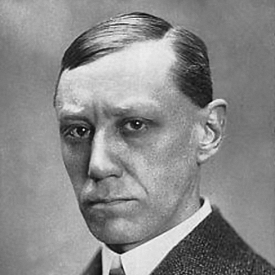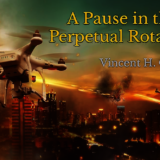July’s here, and whether you’re waiting for the fireworks, sunning at the shore, or sensibly staying in where it’s cool, July is a great month for reading, not only because there are a diverse range of good novels to choose from, but also because there are some excellent annual collections and other anthologies. Neil Clarke has two of note: The Eagle Has Landed: 50 Years of Lunar Science Fiction, which commemorates the Apollo 11 landing on July 20, 1969, and his The Best Science Fiction of the Year: Volume 4. Neil is emerging as one of the field’s leading anthologists, along with Jonathon Stratham, whose Mission Critical anthology comes out this month with a really stellar collection of authors and a theme that answers the popular question: What could possibly go wrong? Well, running out of things to read this month shouldn’t be on that list. Here’s mine.
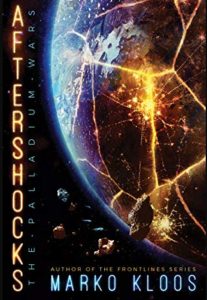
Aftershocks (The Palladium Wars, #1) by Marko Kloos
July 1, 2019 (47North)
The month kicks off with a new series by Makro Kloos, author of the Frontline Series, and one of my favorite mil-SF authors. Set five years after a war in a six-planet solar system where all the planet have been colonized, but only one is really Earthlike, Gretia, were Earth seed crops will grow and colonists don’t have to live in floating arcologies on a sea, or in the sky, or in tunnels carved out of cliff faces. Gretia was the planet that had it all, and yet they started a war they couldn’t win against the combined forces of the other worlds. The story is told both from the viewpoint of a former POW, who was an intel analyst and one of the soldiers assigned to work with the occupied Gretian authorities to keep the peace. Unfortunately, the peace doesn’t want to be kept, and someone is supplying insurgents with high-tech weaponry and using the nastiest tactics of terrorism. This is an excellent read, but it doesn’t get too much more than the setup of the bigger story arc, which is annoying.
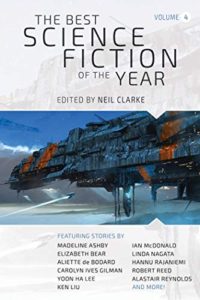
The Best Science Fiction of the Year: Volume 4 by Neil Clarke (Editor)
July 2nd 2019 (Night Shade Books)
Neil Clarke has been publishing his monthly SF zine, Clarkesworld, since 2006, and a number of collections, including one about cyborgs (Upgraded!) following a minor borgification of his own. This is his fourth “best of the year” anthology, and like his zine, it’s a wide-ranging take on the field, guaranteed to alternately please you and leave you scratching your head. Which is what’s great about it. Science Fiction is broad, it contains multitudes, and so does this volume.
The anthology is dedicated to Gardner Dozois, whose The Year’s Best Science FIction was the gold standard, and who we lost last year. As Neil says up front in his introduction, “No one can fill his shoes,” but keeping that in mind, one of the best things about Gardner’s annual was his industry analysis at the beginning, and Neil has adopted much of his format, and for anyone interested in the field, it’s a welcome and insightful roundup of the comings, goings, and doings of publications, collections, and authors.
There are plenty of stories by authors you probably know well: Ian McDonald (Ten Landscapes of Nili Fossae), Linda Nagata (Theories of Flight), Daryl Gregory (Nine Last Days on Planet Earth), Elizabeth Bear (Okay, Glory) and Ken Liu (Byzantine Empathy) to name a few, and more by authors you (and by you, I mean me) should pay attention to, like Yoon Ha Lee (Entropy War) which has the unusual structure of a set of instructions for a game, left by an alien race with the challenge to those who come after, or Nick Wolven (LAB B–15), which is the weirdest groundhog-day story I’ve ever read, until it isn’t that at all. I’m still working my way through this collection, but it’s doing what the best SF of the year should do, expanding both my mind and my ideas about what science fiction is, and could be.
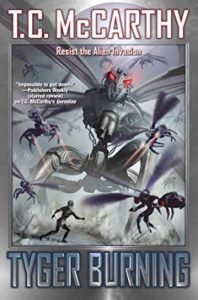
Tyger Burning by T.C. McCarthy (Author)
July 2, 2019 (Baen Books)
Tyger Burning is the first novel in T.C. McCarthy’s new mil-sf series, with a vaguely Ender’s Game hero (not Ender, but Mazer Rackham, the Mauri warrior) character in Maung, a Burmese soldier who’d been brain-hacked by the Chinese during a global conflict, parts of his brain scooped out to make room for an AI that he merges with. Except that turning on his integrated persona makes him visible to the people (and aliens) that want very much to find the last “Dream Warrior.” This follows the setup short story “Somewhere it Snows,” where we learn that the alien Sommen have already attached Earth, brought us to our knees, offered essentially indentured servitude to anyone who wanted to sign on…and then left us alone. The Sommen worship war, and what they really wanted was a sample of humanity to test for worthiness as adversaries. One of those who left with them evidently made the grade, because he came home with a treasure trove of data and a 100-year clock on the war to come. That’s not Maug though, he’s just a refugee on the run who discovers that his Chinese-implanted AI lets his interface with the alien systems, a discovery that forces him to leave his family to hide among the prison guards on an asteroid beyond Europa and Ganymede. What he can’t imagine is that the asteroid was once the base for Earth’s defense fleet, and he’s humanity’s hope for unlocking the secrets buried there. The next book continues the story about 20 years later, but Tyger Burning winds up satisfyingly while setting it up.

Wanderers by Chuck Wendig
July 2, 2019 (Del Rey)
What’s a summer vacation without a post-apocalyptic road trip with zombies? That’s not quite what you get in Wanderers, but I’m not complaining. One by one, healthy, normal, even above-average people suddenly get up and start walking down the road, joining a host that will swell to over a thousand and won’t stop for anything. The walkers don’t seem to be aware of their surroundings, explode if restrained, and have skin too tough for a needle prick, which drives the CDC team crazy. Meanwhile, a seemingly unrelated global pandemic erupts and the connection between the two events is brilliant, and to me at least, unexpected.
Though there are plenty of hot-zone, zombie, and AI elements to this story, the heart of it is in the characters. The CDC investigator that got sacked because he blew the whistle on an eco-disaster before it materialized. The deep-learning AI that gets quantum entangled with itself. The minister that gets sucked into feeding the flames of right-wing conspirators at the end of the world. And above all, Shana, the girl who wouldn’t abandon her sister, the first walker, no matter how far she had to go. It’s a great read, and clearly targeted for a wider audience than just SF readers, but that’s OK. We’ll share.
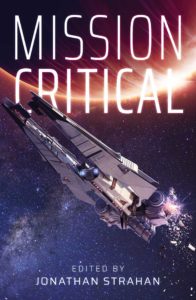
Mission Critical by Jonathan Strahan (Editor)
July 9, 2019 (Solaris)
My favorite snarky comment is , “What could go wrong?” Well, Mission Critical, Jonathan Strahan’s latest anthology, explores that question in fifteen short stories of stuff breaking down and people figuring out how to fix it, or at least survive it. The collection was inspired by a screening of The Martian, where Matt Damon vows to “science the hell out of it,” and the editor’s further reflection on real-life disasters overcome by human ingenuity and tenacity. When Jack Lovell said “Houston, we’ve had a problem.” he was making a statement that would echo through the future as significantly as Armstrong’s, “Small step for (a) man” would.
These stories are as much about hubris as cleverness. In Gregory Feeley’s “Hanging Gardens” , a group of children tries to survive after a mishap during the bombardment of Mars with water-laden asteroids. Seriously, what could go wrong?
This isn’t some collection of stories force-fit into a theme. It’s more like when a movie producer decides to get his favorite actors together and make a film that plays to their strengths. In this case Stratham’s favorites are some of the best: John Barnes, Tobias S. Buckell, Aliette de Bodard, Greg Egan, Gregory Feeley, Jason Fischer & Sean Williams, Carolyn Ives Gilman, Peter F. Hamilton, Yoon Ha Lee, John Meaney, Linda Nagata, Dominica Phetteplace, Kristine Kathryn Rusch, Allen M. Steele and Peter Watts.
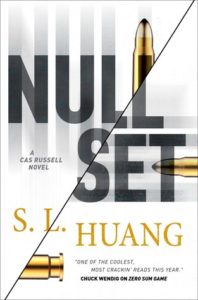
Null Set: A Cas Russell Novel S. L. Huang
July 9, 2019 (Tor Books)
Just last month we had The Girl Who Could Move Sh*t With Her Mind, a girl with paranormal abilities and a serious lack of social skills working with an elite (government) team to take out bad guys in LA. This month we have Cas Russel, and Null Set is the second book, following Zero Sum Game, where Cas is working with a PI and his team, and her superpower is that she’s a mathematical savant, essentially The Girl With The Dragon Skin Tatoo on steroids, but yeah, she’s got the social skills of an angry rock.
Together with her PI pal Arthur, she’s helping clean up the underworld scum…scum she may have worked with or for in her former life (before she gave up being a high-priced assassin and fixer). Also before they shut down a global organization of telepathic assassins in the last book. But life is full of unintended consequences and thanks to her, LA is now devolving into a crime-ridden mess that she’s bound and determined to fix. Just to complicate things, she’s losing her mind, thanks to memories of who she once was fighting their way to the surface.
Bad news for Cas…she’s in for a rough ride. Good news for us, it’s a heck of a ride to watch unfold.
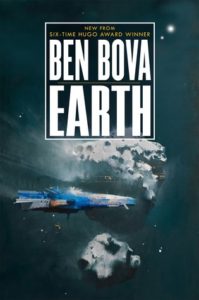
Earth (The Grand Tour) by Ben Bova
July 16, 2019 (Tor Books)
The interesting thing about Earth (The Grand Tour) is not so much that its protagonist, Tray, is a man out of time, having been in cryo-sleep for hundreds of years after the starship he was on was destroyed, leaving him stranded in a scout ship with a deadly wave of radiation heading his way. No, the interesting thing is that the author is man out of time, writing in the future he doesn’t quite get. That sounds harsh, and I feel bad saying it, but if Earth had been published in the 1950s it wouldn’t have raised a single eyebrow.
Tray, now back on Earth with an android companion, which he insists on treating like a human against the social conventions of the time, falls in with a political faction opposing the colonization of the non-humans discovered in various star systems. His mentor from that faction is killed in an accident in Jupiter’s ocean, and Tray, certain that it was murder, stirs things up to seek justice.
If you miss the SF of the 50s, this book’s for you. The characters are simple, the plot predictable, the resolution convenient, and for all the author’s efforts to sound current, his social sense of the future is deeply dated. Maybe that’s all not actually a bad thing. If you’re a fan of Bova’s and actually, I count myself in those numbers. It’s not as though he’s forgotten how to write, just that he doesn’t have anything new to add to the conversation.
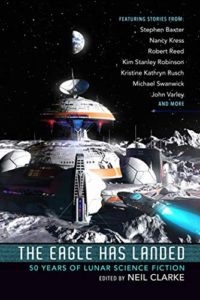
The Eagle Has Landed: 50 Years of Lunar Science Fiction by Neil Clarke
July 16, 2019 (Night Shade)
This month we celebrate the 50th anniversary of the moon landing, and for once we can actually look forward to a time when a human might actually set fool upon lunar soil and look out over “magnificent desolation” again. Neil Clarke decided to commemorate the even with a collection of stories written after the moon landings, and they constitute their own sort of time capsule, telling not just their stories, but reflecting their times.
I love his complaint in the forward that after the moon landings, no one was interested in writing lunar science fiction because it wasn’t fictional anymore. Until, of course, less than five years after Neil Armstrong’s first step, it was fiction again.
Many of these stories are new to me, even if the authors are not, like “Bagatelle” by John Varley, where a cyborged human whose gone nuclear bomb wants to blow up in a lunar city. Written in 1976, maybe the #metoo moments in this story were unremarkable at the time, or maybe they were intentional, but trust me, they’re as uncomfortable as the prospect of a nuclear detonation is tense. Other stories, like Geoffrey A. Landis’ “A Walk in the Sun,” are old friends that I enjoyed revisiting.
The Eagle Has Landed comes out on July 16th, plenty of time for you to catch up before you celebrate the small step taken July 21 at 02:56:15 UTC.
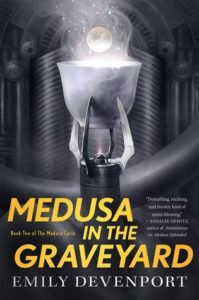
Ancient, sentient, alien starships wait for them–three colossi so powerful they remain aware even in self-imposed sleep. The race that made the Three are dead, but Oichi’s people were engineered with this ancient DNA.” – Blurb
Medusa in the Graveyard by Emily Devenport
(The Medusa Cycle #2)
July 23, 2019 (Tor Books)
In the first book in this series, the human/hybrid tunnel worker Oichi led a revolt against the elites on a generation starship as it neared its destination. You know, standard fare. Except for the parts about teaming up with the bio-robot Medusa who Ochi merges with to become a combined entity, the fact that this is all 30k years hence in a universe where generation ships and warp/jump drives coexist and that the Olympia’s sister ship the Titania was destroyed by the elites before their demise. Add in the existence of millennia-spanning intelligences on the Olympia’s destination world that want to talk to Ochi, and it’s not so run of the mill after all.
The Olympia is heading for the world of Graveyard, where there are lots of old things, ancient alien AIs and junkyards full of equally-ancient starships, but not fast enough for our hero and the plot. Fortunately, a diplomatic message is delivered to the Olympia by the crew of the Merlin, a small FTL- and atmosphere-capable ship with the kind of motley crew that makes these adventures fun. Oichi, her protege Ashur, and the bio-bots he’s created all pile in and head for the planet to meet with the Three, the mysterious intelligences that have been helping/hindering them throughout. Along the way, they make new friends, meet old enemies, and walk a long way to get where they’re going, but they’re not done yet.
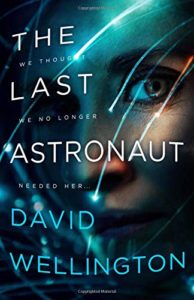
She’s wrong.”
The Last Astronaut by David Wellington
July 23, 2019 (Orbit)
Sally Jansen lost a mission to Mars when a fuel leak immolated part of her crew and the landing craft. That’s not the sort of thing you get forgiven for, in fact, it’s the sort of thing they shut down whole space programs over. Then an alien object is detected heading for Earth and changing course and speed, and suddenly Sally and the backup spacecraft from her mission are out of mothballs. Of course, they send a military type along in case contact requires a more kinetic style of diplomacy, but Sally’s the commander, at least until the object shows hostile intent. There’s aslo a Space-X type mission racing to get there first because that’s how you get rights to intellectual property, right?
But the alien “spacecraft” is like nothing they imagined, and both crews are in peril from the moment they set foot on the massive object. What follows is part high-tech space drama, part trip through a Stranger Things version of Clarke’s Rendezvous with Rama, and an impressive examination of how different minds and cultures approach a problem: NASA, scientists, the military, private space firms, and alien life forms. It’s dark in space, but it’s darker inside the object.
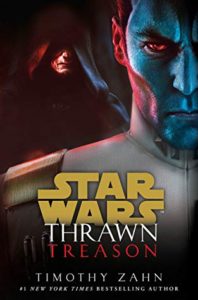
Such was the promise Grand Admiral Thrawn made to Emperor Palpatine at their first meeting. Since then..But as keen a weapon as Thrawn has become, the Emperor dreams of something far more destructive.”
Thrawn: Treason (Star Wars) (Star Wars: Thrawn) by Timothy Zahn
July 23, 2019 (Del Rey)
Grand Admiral Thrawn has had a time of it. He’s been a powerful villain in command of the post Return of the Jedi Imperial forces in the Star Wars Expanded Universe, declared non-canon by Disney and dismissed, then brought back to appear in Star Wars Rebels, the CGI animated series. Treason is the third book in Timothy Zahn’s new trilogy, which goes back to reveal the Grand Admiral’s rise to power. In Treason, the capstone of the trilogy, Thrawn finds that he’s losing sway over the Emperor, who’s fallen in love with Death Stars over Tie fighters, Thrawn’s weapon of choice. Worse, there’s trouble brewing on his homeworld, and no matter which way he turns, he’s going to have to commit treason.
Even though he’s never appeared in the films, Thrawn is clearly one of Star Wars’ most engaging characters, due primarily to Timothy Zahn’s telling of his later story in the original post-Jedi trilogy.
You may not care for all the side stories in this franchise, but Zahn always comes up the sort of plots and characters that make you wish he was writing the screenplays.
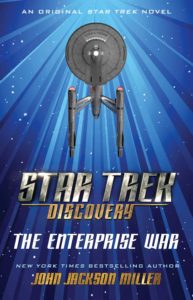
Star Trek: Discovery: The Enterprise War by John Jackson Miller
July 30, 2019 (Pocket Books/Star Trek)
If you thought that Christopher Pike was the best thing about Star Trek Discovery and wished there was a series about his command of the Enterprise, this should keep you happy for a bit, or at least clear up the question of why the Big E missed out on the Klingon War.
Since this is a late July release, review copies weren’t available–so I reached out to the author to find out where this fits into Trek canon. He told me that he “developed the book in consultation with the Discovery writer’s room, which had input and approval.” and that “Past novels have generated character names that have turned up in the show, so it is at a minimum informing canon, as well as consistent with it.”
Beyond that, who knows?
The real question is whether or not the story holds up. The fact that Jackson’s a well-liked Star Wars tie-in author with 30 or so titles behind him and plenty of fans says that NCC-1701 is in good hands here.
But Wait, There’s More…
That’s all I’ve had time to read, but there’s still a lot of notable stuff in the pipeline. The Redemption of Time: A Three-Body Problem Novel (Remembrance of Earth’s Past) by Baoshu (Author), Ken Liu (Translator) is an interesting continuation of the Three Body Problem trilogy after the subjugation of humanity by the Trisolarians, by a new author “supported” by Ken Liu. Sweet Dreams by Tricia Sullivan is about a “dream hacker” who picked up the ability to enter other peoples dreams after getting messed up due to a medical trial she signed up for, which also gave her narcolepsy. She’strying to make the best of it by becoming an alt-therapist and helping people work manipulate their dreams, but has no clue about how much her life is being manipulated by forces around her. Out in 2017 in the UK, it’s just getting here. Atmosphæra Incognita by Neal Stephenson is a new novella about the construction of a ” twenty-kilometer-high tower that will bring the human enterprise, in all its complexity, to the threshold of outer space.” Stephenson’s novels are always good, but they’re also reliably massive. Here’s a chance to see him in action and get through the book before your vacation is over. Keepers (Project Earth #2) by Brenda Cooper follow her first novel of a post-ecological breakdown Pacific Northwest, which contrasted the protected life of a high tech city with the wildlife of those who left it to work with the damaged eco-system. Both books follow two sisters, one who’s chosen the city and the other the wild, as they cope with threats to a group that wants to tear down the city and return the wilderness. I liked the first one pretty well.
So, that’s what caught my eye this month, but of course, it’s not all that’s out there worth reading. There’s a lot of very readable fiction that’s only available for Kindle but doesn’t cost much, and I often go there for a quick read. The quality is variable, and often closer to fan-fic than you’ll find elsewhere, but it’s often fun. Some authors, like Evan Currie, could clearly jump into big-name publishing houses anytime they wanted, but like the freedom of the publishing model. As always, I urge you to step outside your comfort zone and explore the vast realms out there. Who knows what wonders await you?
About my process and the Usual Suspects
For the most part, this list sticks to what appeals to me as science fiction, about which I’m willing to be fairly flexible, but if here there be dragons, you can expect to find some tweaked DNA to explain it. I make up this list based on what I’ve read, what I heard and what I’m really looking forward to. Quite a few will wind up getting full-length reviews here or around the web, especially at SFRevu.com where I’m editor emeritus.
You can find me on Facebook at @Ernest Lilley or on my blog @ beingErnest





